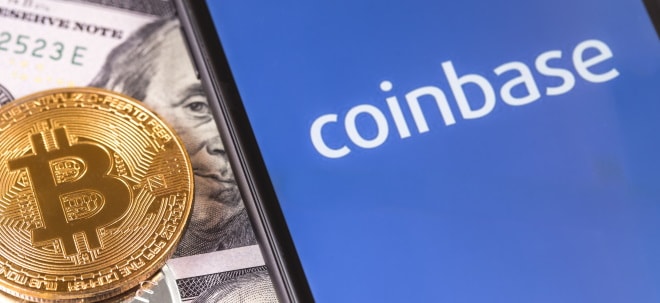EQS-News: SeaStar's QUELIMMUNE Can Cut Pediatric Sepsis Deaths In Half
Werte in diesem Artikel
|
EQS-News: Benzinga
/ Key word(s): Healthcare
Werbung Werbung By Meg Flippin Benzinga DETROIT, MICHIGAN - June 27, 2025 (NEWMEDIAWIRE) - SeaStar Medical Holding Corp. (NASDAQ: ICU), the commercial-stage healthcare company focused on transforming treatments for critically ill patients facing organ failure and potential loss of life, has made a lot of inroads on that front with QUELIMMUNE. A humanitarian medical device, QUELIMMUNE treats pediatric patients with acute kidney injury or AKI due to sepsis or a septic condition. The QUELIMMUNE therapy received U.S. Food and Drug Administration approval in 2024 after clinical trials showed it could cut mortality in half from 50% to 25%.  Werbung Werbung “QUELIMMUNE is designed to target the innate immune response. When patients get very sick, it becomes very dysregulated and cells go haywire and trigger something called the cytokine storm,” said Dr. Kevin Chung, MD, Chief Medical Officer at SeaStar Medical. “The QUELIMMUNE device is designed specifically to target the cytokine storm at the source of the storm and it is associated with really good outcomes, especially in the pediatric population where mortality was cut in half from 50% to 25%.” From The Golf Course To The ICU That was the case for Kurt, a young student and avid golfer who has won multiple golf awards even though he underwent two open-heart surgeries before his sixth birthday. Knowing at an early age that he couldn’t compete in the sports other kids were playing, Kurt picked up golf and never looked back. But over the years, Kurt faced doctor visits and surgeries, culminating in a near-death experience. At the time, Kurt was being treated at Cincinnati Children's Hospital Medical Center, where Dr. Stuart L. Goldstein, MD, the lead researcher for QUELIMMUNE’s two trials that led to the device's FDA approval, worked. Kurt went in for a planned surgery to address an artificial replacement from his pulmonary to aortic valve, but had to be opened up again two days later as a result of blood leaking from his heart at the site of surgery. Werbung Werbung Kurt was put on a ventilator and went into multiple-organ failure, caught hospital pneumonia, and ultimately endured a 12-day coma. He developed AKI and respiratory failure, and doctors prepared to put him on ECMO (Extracorporeal Membrane Oxygenation), a more invasive type of support. But Dr. Goldstein spoke with the on-staff cardiologist and Kurt’s family and suggested that the QUELLIMUNE therapy would be helpful for him. “Kurt just started to turn around within 24 to 48 hours and did not require ECMO. Kurt left the ICU within two to three weeks and resumed going back to school and golfing,” says Dr. Goldstein. “It was quite dramatic and is emblematic of when we see this work, which is far more often than not, patients turn around really really quickly when you wouldn’t expect them to.” A Christmas Miracle For Kurt’s father, David, the QUELIMMUNE therapy was a last-ditch effort to save his son, who had been languishing in the ICU for eleven days. Every night, the doctors would offer up different therapies and treatment ideas to stop his son’s organs from failing and as luck would have it, one evening David and his nephew, who is also a doctor, ran into Dr. Goldstein outside of his son’s room. Dr. Goldstein said he thought the QUELIMMUNE therapy could help with the inflammation and the family decided, given the apparently bleak prognosis, to give it a try, recalls David. From day two on, the inflammatory markers improved and continued to get a lot better. “The inflammatory markers improved every day,” says David. His son was woken from the coma on day six of treatment, December 24. “It was a Christmas miracle. He was awake and his numbers were improving,” his father said. Kurt had a tough recovery ahead of him when he woke up. He entered the hospital weighing 150 pounds and left at about 120 pounds. But by the beginning of March, he had regained his strength and energy and was golfing again. That is one of the other aspects of the QUELIMMUNE therapy that astonishes Dr. Goldstein, and makes him so optimistic that the device can treat other children with AKI. Typically 10% to 30% of pediatric patients who survive an AKI episode require chronic dialysis, but Kurt didn’t. “It is nothing I've seen before in clinical medicine in the last quarter century,” said Dr. Goldstein. Featured image from Shutterstock This post contains sponsored content. This content is for informational purposes only and is not intended to be investing advice. This content was originally published on Benzinga. Read further disclosures here. News Source: Benzinga
27.06.2025 CET/CEST Dissemination of a Corporate News, transmitted by EQS News - a service of EQS Group. |
| Language: | English |
| Company: | Benzinga |
| United States | |
| ISIN: | US81256L2034 |
| EQS News ID: | 2161962 |
| End of News | EQS News Service |
|
|
2161962 27.06.2025 CET/CEST
Übrigens: US-Aktien sind bei finanzen.net ZERO sogar bis 23 Uhr handelbar (ohne Ordergebühren, zzgl. Spreads). Jetzt kostenlos Depot eröffnen und als Geschenk eine Gratisaktie erhalten.
Ausgewählte Hebelprodukte auf SeaStar Medical
Mit Knock-outs können spekulative Anleger überproportional an Kursbewegungen partizipieren. Wählen Sie einfach den gewünschten Hebel und wir zeigen Ihnen passende Open-End Produkte auf SeaStar Medical
Der Hebel muss zwischen 2 und 20 liegen
| Name | Hebel | KO | Emittent |
|---|
| Name | Hebel | KO | Emittent |
|---|
Nachrichten zu SeaStar Medical Holding Corp Registered Shs
Analysen zu SeaStar Medical Holding Corp Registered Shs
Keine Analysen gefunden.

